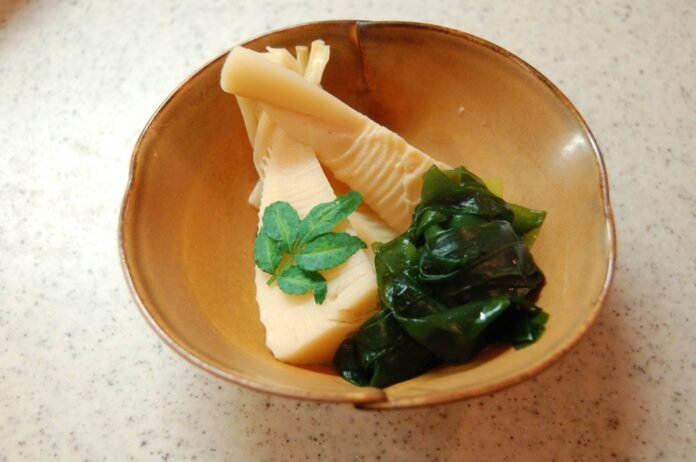When I arrived in Japan in the mid-1960s, one of my first encounters with Japanese food was a dish my mother-in-law would prepare in late spring: tender takenoko (bamboo shoots) and newly harvested leaves of wakame (brown seaweed) simmered together in a smoky, soy-tinged broth.
Like many women born in the late Meiji era (1868-1912), my mother-in-law ate a primarily plant-based diet. One of her exceptions was this smoky broth dish, made by adding double kelp stock katsuobushi (bonito fish flakes). Known as “takenoko no Tosa ni(literally: ‘bamboo shoots stewed in the style of Tosa’, a reference to the town of Tosa, Kochi Prefecture) and garnished with peppery sprigs of kinome picked from the sansho shrub that grew at the back entrance of the Andoh family home in rural Shikoku, this is the dish that got me hooked on the traditional Japanese ways of the washoku kitchen.
Combining land and sea food in the same dish is described as “Umi no sachi, yama no sachi” (wealth of the ocean, abundance of the land). It is one of many washoku guidelines for creating a healthy, eco-friendly lifestyle.



